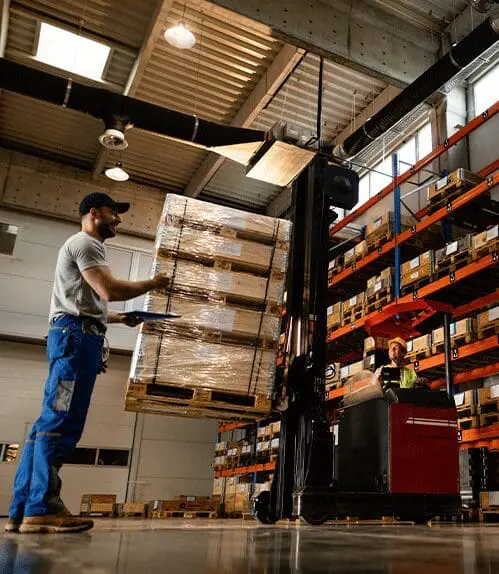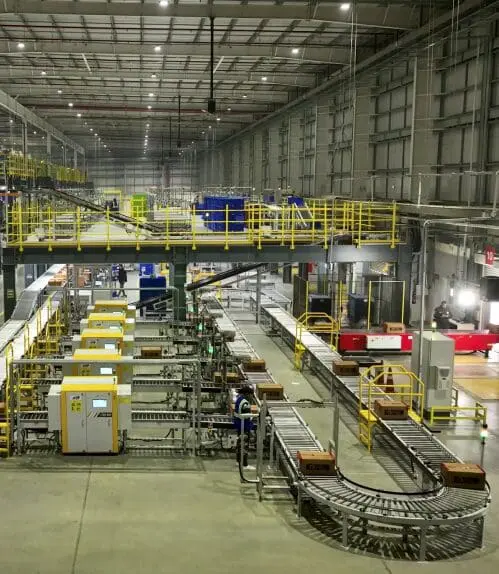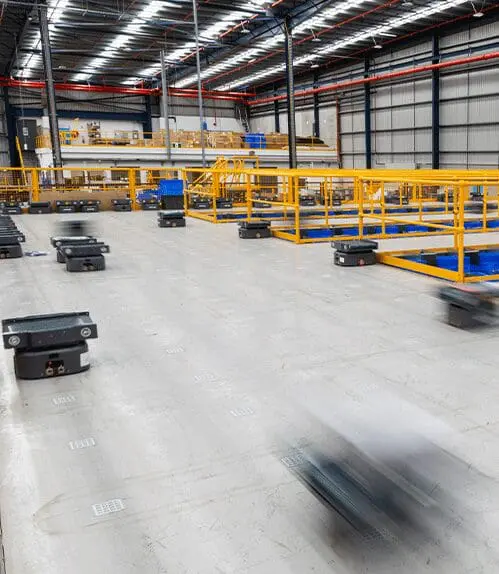Table of Contents
Warehousing has come a long way from the days of manual labour and static storage. Today’s warehouses are evolving at an unprecedented pace, and future warehousing promise even more exciting transformations. Vision 2030 will see warehouses becoming hubs of innovation, efficiency, and sustainability. At the forefront of this transformation is automation, playing a pivotal role in shaping the future.
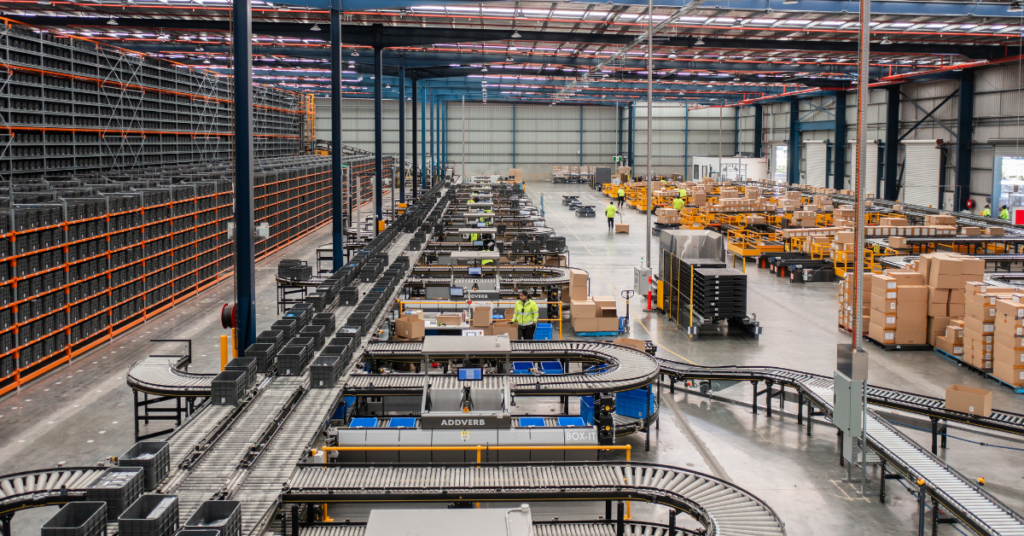
The Changing Landscape of Warehouses of the Future
As we enter the third decade of the 21st century, the landscape of warehousing is undergoing a paradigm shift. Several factors are contributing to this transformation.
E-commerce Boom: The rapid growth of e-commerce has placed unprecedented demands on warehouses. Consumers expect quicker deliveries, which has driven the need for more efficient and advanced warehousing solutions.
Globalisation: Warehouses are no longer just local storage facilities; they are crucial nodes in global supply chains. This necessitates a rethinking of how warehousing operates and interacts with other parts of the logistics network.
Sustainability: Environmental concerns are pushing the industry towards more sustainable practices. The warehouses of the future will need to be eco-friendly, with reduced energy consumption and a smaller carbon footprint.
Customisation: With an increasing variety of SKUs, warehouses will have to adapt to accommodate diverse inventory and handling requirements.
Automation: The Heart of Warehouse Evolution
Automation is undeniably the driving force behind the evolution of warehousing. It encompasses a wide range of technologies and solutions, all aimed at increasing efficiency, reducing costs, and improving the overall performance of warehouses.
Robotic Systems: Autonomous Mobile robots will play a central role in handling tasks such as picking, packing, and even transportation within warehouses. These robots will work alongside humans, enhancing efficiency and accuracy.
AI and Machine Learning: Advanced algorithms will optimise warehouse operations by predicting demand, improving inventory management, and dynamically routing items for efficient order fulfilment.
IoT and Sensor Technologies: The Internet of Things (IoT) will be widely adopted to track inventory in real-time, monitor equipment health, and enable predictive maintenance. Sensors will ensure better visibility and control over warehouse operations.
Drones and Autonomous Vehicles: Drones and autonomous vehicles will revolutionise last-mile delivery and intra-warehouse material movement, speeding up the supply chain.
Advanced Warehouse Management Systems (WMS): Warehouse Management System will evolve to provide more comprehensive control and oversight of all warehouse processes, integrating various automation technologies seamlessly.
Benefits of Automation
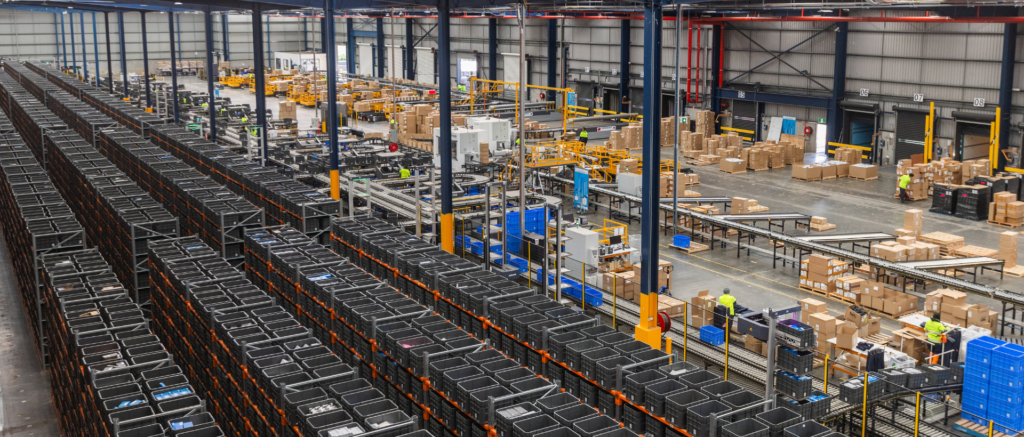
Enhanced Efficiency: Automation reduces human error, increases accuracy, and speeds up operations. This leads to faster order fulfilment and improved customer satisfaction.
Flexibility: Automated systems can be easily reconfigured to accommodate changing inventory needs and market demands, making warehouses more adaptable.
Sustainability: Automation can reduce energy consumption and waste, creating a more environmentally friendly and sustainable warehousing ecosystem.
Safety: Robotic systems can handle repetitive, strenuous, and dangerous tasks, reducing the risk of workplace accidents and ensuring a safer working environment for employees.
Challenges and Considerations
While the future of automated warehouses is promising, there are challenges to address
Initial Investment: Implementing automation can require a significant upfront investment in technology and infrastructure.
Workforce Transition: Automation may lead to concerns about job displacement. However, it’s important to remember that automation can create new job opportunities in maintenance, monitoring, and system operation.
Integration and Compatibility: Implementing a mix of automation technologies requires careful planning to ensure all systems work harmoniously.
Conclusion
The warehouses of the future, as envisioned for 2030, are set to be highly automated, efficient, and sustainable hubs within global supply chains. Automation, driven by robotics, AI, IoT, and advanced software, will be the linchpin in achieving these objectives. As the industry continues to evolve, stakeholders need to embrace the changing landscape and invest in the technologies and strategies that will enable them to thrive in this new era of warehousing. Ultimately, the warehouses of the future will not only meet the demands of an evolving market but contribute to a more sustainable and efficient global supply chain ecosystem.

FAQ
What features will future Storage have?
Advanced robotics, AI, IoT, real-time data analytics, and sustainable practices will enhance efficiency and reduce costs.
How will robotics impact warehousing?
Robots will automate picking, packing, and transport, increasing speed, accuracy, and safety.
What is AI’s role in warehousing?
AI will optimize inventory, predict demand, and improve decision-making, boosting efficiency.
How will IoT benefit warehousing?
IoT will enable real-time tracking and better resource management, enhancing operational efficiency.
How will warehousing ensure data security?
They will use encryption, access controls, and regular audits to protect data.
How will the workforce adapt?
Workers will be reskilled to operate advanced tech and collaborate with robots.
What is the adoption timeline for these technologies?
Widespread adoption is expected by 2030, with gradual integration of new solutions.
How will customer expectations drive change?
Demand for fast delivery, transparency, and sustainability will push warehouses to adopt new technologies.
What challenges will warehousing face?
Challenges include high costs, integration issues, cybersecurity, and the need for staff training.
Founded in 2016, Addverb offers complete robotics solutions for warehouse and industrial automation, with a strong global presence through its subsidiaries worldwide. The company provides a range of in-house automation products, including Autonomous Mobile Robots, ASRS, and sorting technologies. It serves over 350+ clients, including well-known companies such as Coca-Cola, Amazon, and DHL.

